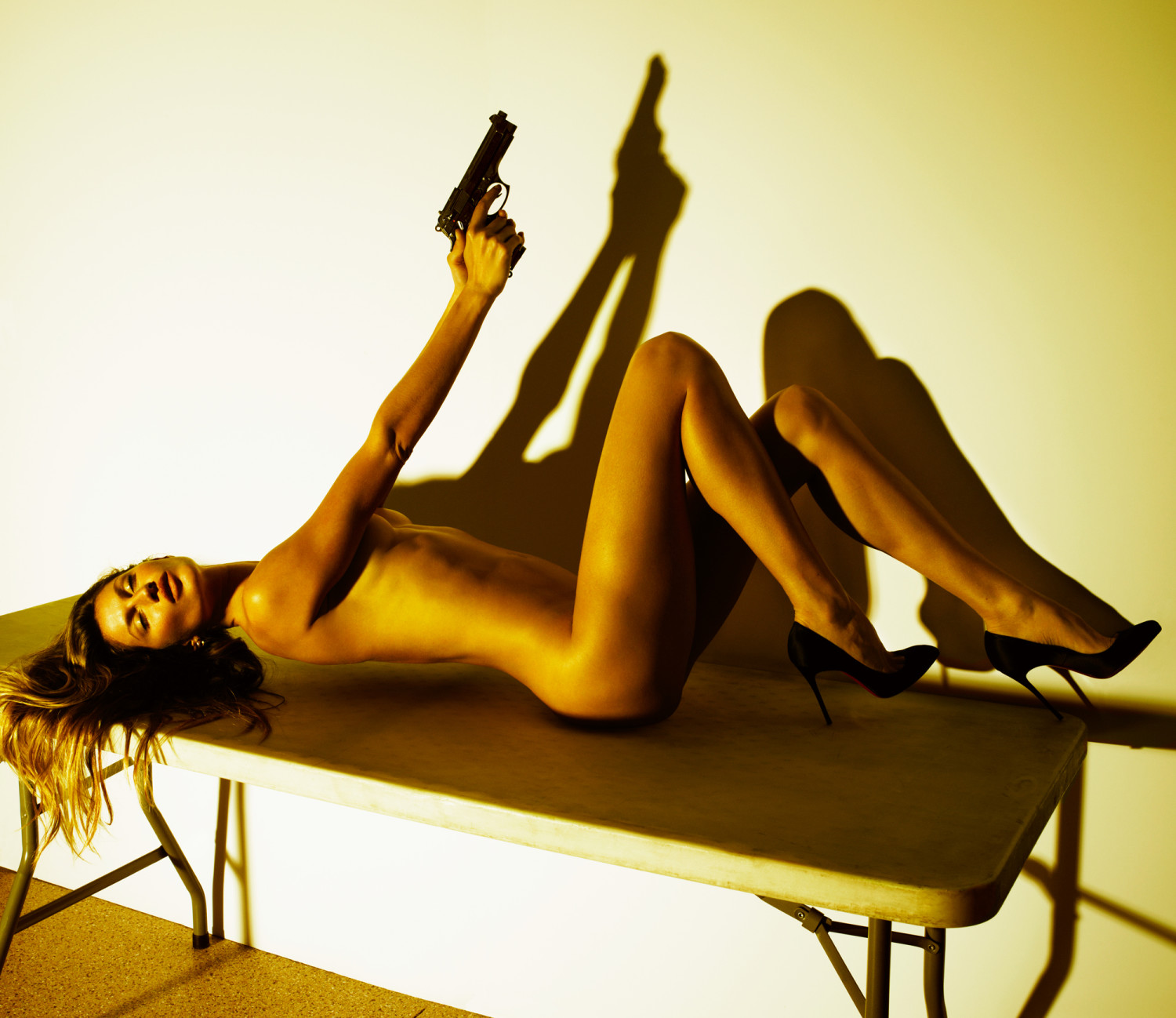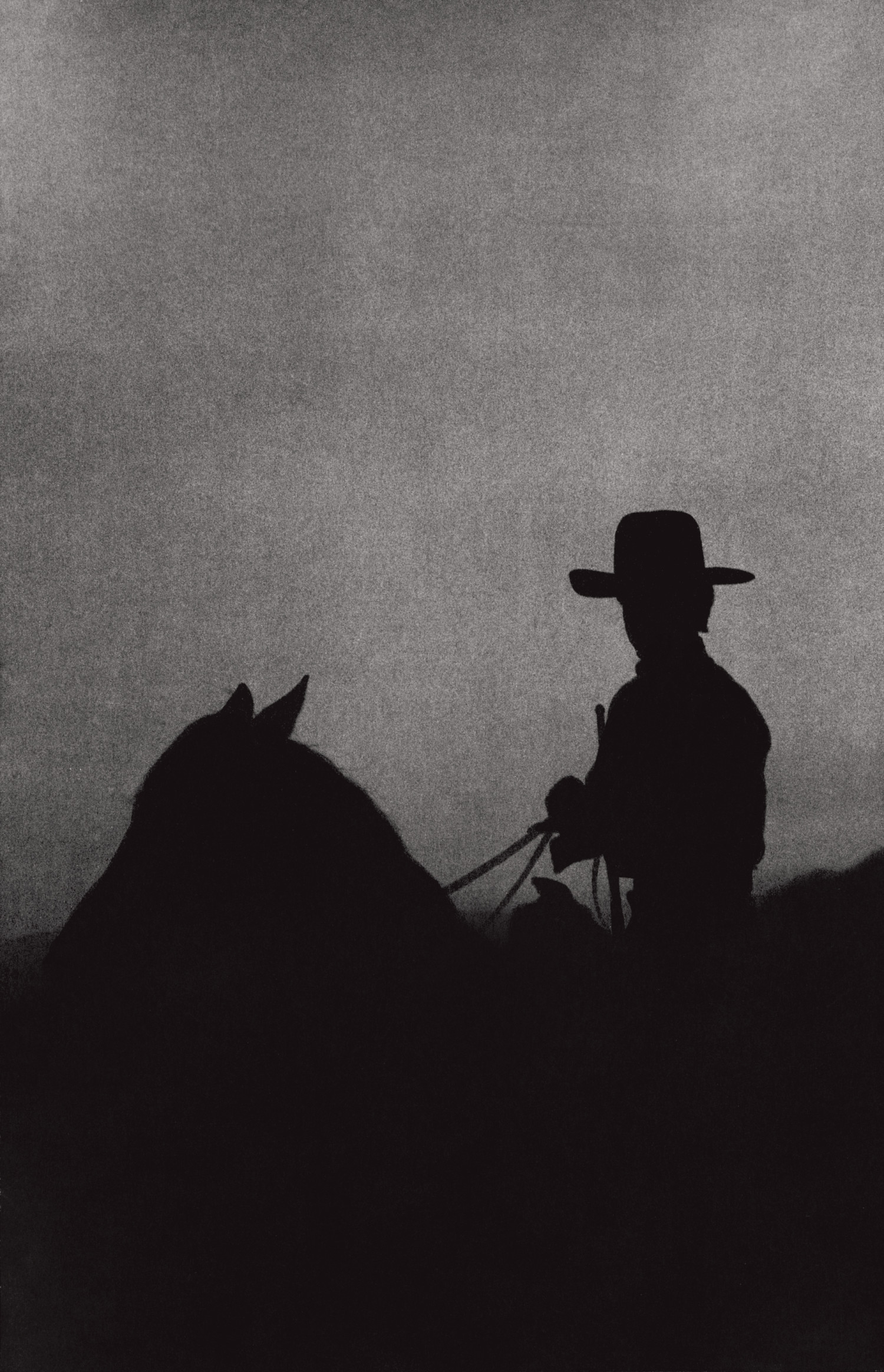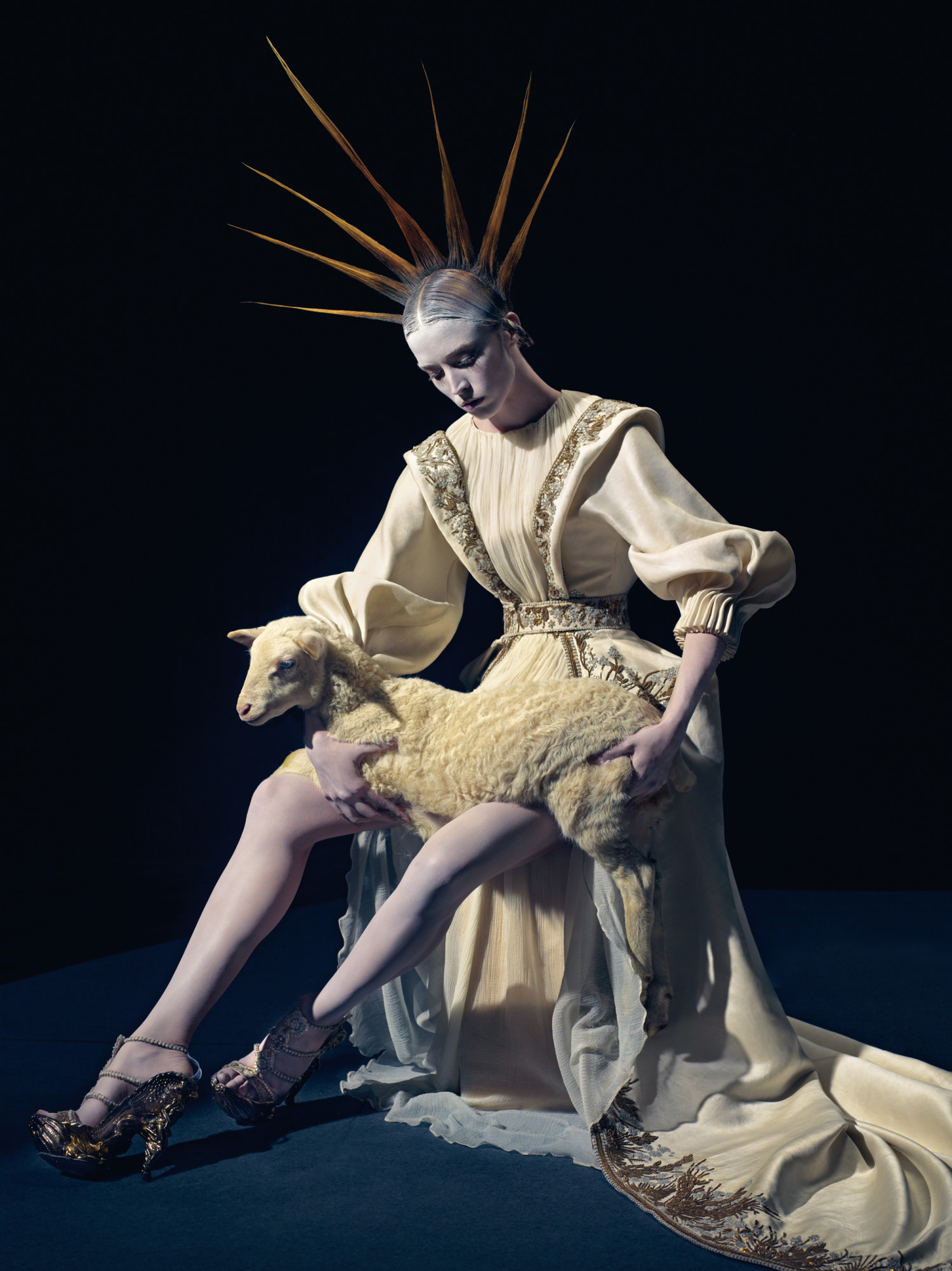
VISIONAIRE CELEBRATES TWENTY-FIVE YEARS
Despite the drastic changes that independent publishing has gone through over the last two decades, a few brands have managed to come out unscathed. Visionaire, the art and fashion publication famous for reinventing itself in form with each issue, might be the most emblematic among them, if for no other reason than the inherently unique position it occupies. Essentially the ‘haute couture’ of magazines, the breathtaking imagery, distinguished contributors, and high-concept production have put the publication in a class of its own, with previous issues appearing as playing blocks, a pack of postcards, polo shirts, puzzle pieces, and pop-up books. A new, eponymous tome from Rizzoli documents twenty-five years and sixty-five issues of the publication, showcasing founders Cecilia Dean and James Kaliardos’s groundbreaking work and welcoming you into their ever-changing and unflinchingly creative world.
Visionaire started in 1991, when Dean was finishing her last semester at Barnard after already having developed a career modeling. “It was a really different time than now,” she recounts. “It was pre-internet. No one had a smart phone, there was no social media, no websites, there was no desktop publishing. As a fashion photographer or fashion illustrator, there was no way to share your work with a larger audience except through a magazine, and the magazines were quite big and commercial. We just knew all these amazing fashion photographers and fashion illustrators who had all this personal work that was literally kept in a drawer. They had no place to put it, and they weren’t part of the gallery system. So really that was the birth of Visionaire, for them to show personal work.”
Today the landscape is completely different. New indie magazines sprout up every year, and even if you don’t buy them, there’s still an endless stream of art and photography for you to experience through social media. “Now you can press a button and share it with millions of people. Why we started is no longer relevant…,” Dean begins, but Visionaire’s insistence on trying new things unintentionally broke the mold, and its value as a physical object quietly sidestepped the rapid transition to digitalization. “It just evolved over time, experimenting with different formats became really interesting for us. Then giving challenges to artists became really interesting. Instead of saying, ‘We’ll print your personal work, this is the theme you’re working on,’ it would be like, ‘Ok we’re doing an issue about scent—what does it smell like?” she says, referring to issue forty-two, which came as twenty-one sample vials of perfume. “We work with so many artists that are so busy and get paid so much money to do what they do best. I feel like we have this huge challenge to offer them an opportunity that gets them so excited and inspired that they want to participate. And I don’t know who else would give them an opportunity to create a smell; that’s a really fun endeavor.”
“It all comes from personal interest,” Dean continues. “We’re totally governed by our personal interest, gut instincts—what we want to learn about, what we haven’t explored yet.” Much of that takes form in collaboration, a word Dean often uses as one of the core principles of Visionaire. The list of partners is extensive: Mario Testino, Helmut Newton, John Baldessari, and David Bowie have contributed, and brands including Hermès, Fendi, and Louis Vuitton (the sought-after eighteenth issue comes in a special Louis Vuitton-monogramed portfolio) have partnered on issues. But with a new generation accustomed to consuming digital content, there are new challenges. “It’s really important for us to work with new artists and emerging artists and the new wave of big artists,” Dean explains, “and it’s very easy to get out of touch with that.” A new film series creates the perfect opportunity to bring in a range of young filmmakers and artists, who are tasked with creating commercials for every issue of Visionaire that will be featured online. It’s the first of several film ventures in the pipeline, and one that offers an entry to their world for both participating artists and viewers alike. But while all editors are enamored by the possibilities of video content, the philosophy is still very much Visionaire: “The role that we filled in 1991 with print is sort of what we’re doing now with digital content,” Dean says. “And we’re starting to think a little more seriously about that and being a place where we can show experimental films or test projects.” There’s also an exhibit space in New York’s Cadillac House that Visionaire is programming, offering another opportunity for visitors to interact with the brand. In the current exhibit in collaboration with Tellart titled “Autoportrait,” visitors can get their portraits drawn by a robotic arm, or ‘robot artist.’
Much of the continued status and the appeal of Visionaire comes from the unique physical presentation. Many issues are highly limited and often presented in an unusual format; issue twenty-four, “Light,” was a battery-powered light box, issue fifty-three, “Sound,” was a set of six vinyl records and two CDs, and issue sixty-three, “Forever,” was made out of steel and aluminum. “It’s so interesting with stores because they’re always complaining,” Dean laughs. “We did a round issue and everyone complained, we did issues that were just too big or too heavy and they complained, but if we repeat ourselves they complain. I feel like we’re incredibly naïve, and we’ve managed to maintain a certain level of naïveté, so we actually come up with these ideas, which we don’t think are crazy, but once we get into it we’re like, ‘Oh my god, this is crazy, this is the reason why no one has done this before.’ It’s fun, hugely frustrating, a little stressful, but once you hold the final product, it’s such a sense of accomplishment.” The next issue, “Ritual,” consists of three scented sculptural candles by Maurizio Cattelan, Barbara Kruger, and Bruce Weber in an edition of two hundred. “Some people can say, ‘Is that publishing?’ We think it’s publishing because we’re sharing images with a larger audience. It just doesn’t happen to be ink on paper.”
Ironically, ink on paper is precisely what Dean and Kaliardos envisioned when preparing their retrospective book with Rizzoli. “We wanted to feature the incredible images that we’ve published and not get distracted with all the crazy formats we’ve done,” Dean says before cheekily adding, “It’s so traditional, for us it’s radical.” Filled with vivid, striking images, it’s easy to get lost in the book. Printed in reverse chronology, with every page turn it’s harder to imagine how impactful these visuals must have been twenty-five years ago considering how sharply they stand out among the sea of fashion images that vie for attention today. “It’s kind of funny,” Dean muses, “I almost think we make more sense now than we did before.”
Visionaire: Experiences in Art and Fashion is out now. Cecilia Dean and James Kaliardos will discuss the book tonight at Rizzoli Bookstore, 1133 Broadway, New York.




















